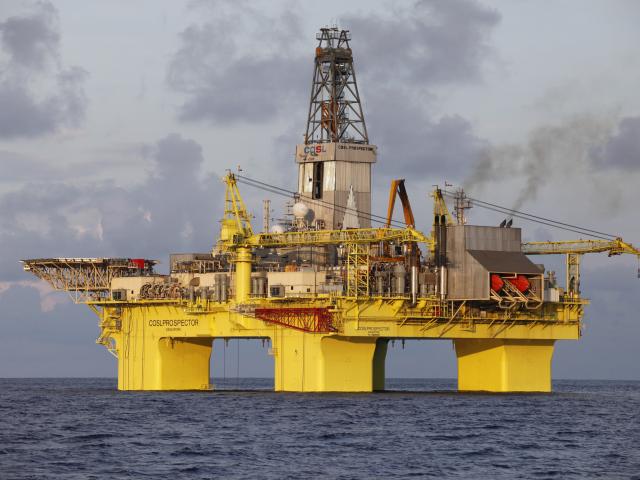
The company, which operates the Maui and Pohokura gas fields, is currently drilling off Taranaki.

The well lies in 1300 metres of water, so is not especially deep by world or New Zealand standards. The five-year-old Prospector was designed to operate in the harsh environment of the North Sea.
The consent granted by the EPA today allows for the drilling of up to 10 exploration and appraisal wells out to December 2030. The application was heard by a decision-making committee comprising David Hill, Glenice Paine and Dayle Hunia.
"The committee concluded that the potential effects of the planned activities, including cumulative effects on the biological environment and effects on existing interests, are not significant because they are either temporary or involve small areas - or low proportions - of habitat," the authority said in a statement.
"Conditions include a requirement to carry out environmental monitoring before each well is drilled and for three years after completion."
OMV and partner Mitsui have been exploring in the Great South Basin for 12 years but are yet to drill a well. Their 16,715 square-kilometre permit, extended by the Government last year, expires in July 2022 and requires the drilling of a well by July 2021. If drilling is successful the permit can be extended out to 2030.
Tawhaki-1 will be the southern-most well drilled in New Zealand waters in 35 years.
Whereas the Taranaki marine environment and the operating conditions there are well understood, OMV's application for the Great South Basin required a lot of fresh material on conditions there.
Gabriel Selischi, OMV's senior vice president for Australasia, said the consent process had been highly detailed and technical and the company had put a lot of work into ensuring the drilling programme met world best practice.
"The exploration efforts will be very important for New Zealand's energy future and we welcome the robust conditions that that the consent is subject to," he said.
"Today's decision now allows us to proceed with this critical programme of work."
The 171-page decision had been due a month ago and the EPA had to seek an extension.
OMV is now working to fix a schedule for the GSB drilling. It previously signalled the rig might need to be at Tawhaki for about 50 days, about 20 of which would be spent drilling.
Drilling Tawhaki after the Gladstone-1 well it is currently drilling north-west of New Plymouth would enable OMV to make the most of the better summer weather.
The EPA has been subjected to a campaign by Greenpeace and other environmental groups, despite OMV's application being a contract requirement of its exploration permit with the government.
Greenpeace tried unsuccessfully to have the EPA conduct a public hearing for all aspects of the application and then also tried unsuccessfully to get the High Court to judicially review that decision.
Gas is considered a critical transition fuel to help the world meet rising energy demand while also displacing higher-emitting fuels like coal and oil.
Last month, the International Energy Agency projected that global gas use in 2040 could be similar to current levels under a scenario that keeps global warming below the 2 degrees Celsius target set in Paris in 2015.
The potential of the deep sedimentary rock in the Great South Basin, and the Canterbury Basin to the north, has long been recognised. There are proven petroleum systems in the region but drilling has been sporadic since the 1970s and activity dried up after the plunge in oil prices in late 2014.
Several wells drilled in the region, including Caravel-1 drilled by Anadarko Petroleum north-east of Dunedin in 2014, have shown gas, but not in quantities considered economic.
The more southerly Kawau-1A well, drilled by Hunt International Petroleum in 1977, gave some of the most promising results. The structure, about 250km off the Catlins Coast, was estimated to hold 461 billion cubic feet of gas and condensate but wasn't considered economic back then.
In a presentation to potential partners last year, Vienna-based OMV noted that 10 of the 14 wells drilled in the basins had encountered hydrocarbons, with four delivering sub-commercial discoveries.
It estimated the potential resource in just the key prospects in the existing permits within the region at the equivalent of almost 3.7 billion barrels of oil and gas.
The two basins cover roughly 160,000 square-kilometres - four-times and six-times larger respectively than the producing, and geologically related, Taranaki basin and the Gippsland basin off the coast of Victoria.
- BusinessDesk
Comments
Excellent news.
I wish them every success.
I would have thought Aaron would row out there in person and shake the Captains hand if for nothing else but offering up another jewel for our economy.
Oh, hang on, we're more concerned with widening the cycle lanes, buying electric cars with mined lithium in their batteries and banning single use plastics.......as the next 10 storey, fuel gulping, smoke belching behemouth docks.












